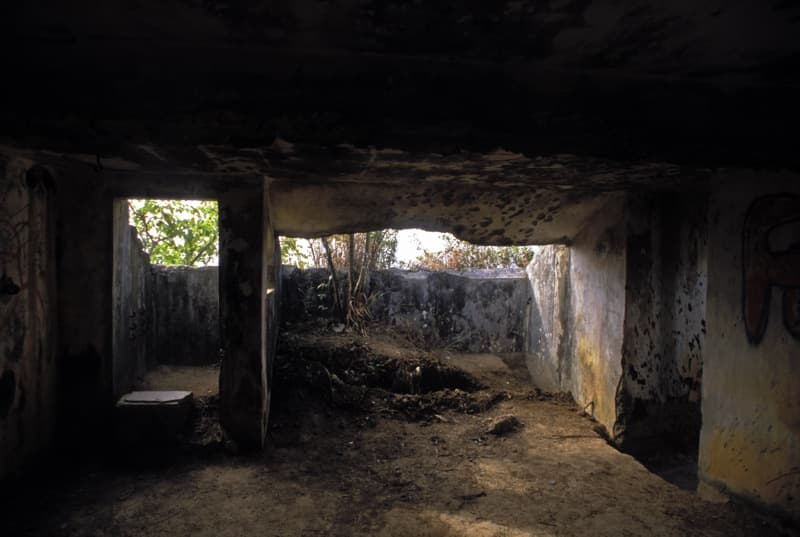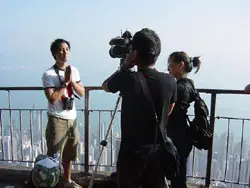There are many Second World War relics in Hong Kong, several of which are well worth visiting.
The February 2014 discovery of an unexploded 2000-pound bomb in Happy Valley served as dramatic reminder of the Second World War affecting Hong Kong. There are many other, way less scary relics of the war here, several of which are well worth visiting. Along with exploring pillboxes, bunkers and gun emplacements, you can learn of history, and overlook extensive vistas.
Here are three places that featured in the Japanese invasion of Hong Kong.
Shing Mun Redoubt
History In the late 1930s, with potential threats from the Japanese army increasing, the British began building defences for Hong Kong. Chief among these was the Gin Drinkers Line, extending eastwards from above Gin Drinkers Bay (present day Kwai Chung) across the north slopes of the Kowloon Hills.
Modelled on France’s Maginot Line, this included concrete tunnels, trenches, bunkers and artillery positions. And like the Maginot Line, it proved almost useless as war actually arrived.

On 8 December 1941, the Japanese entered the northern New Territories. Though thinly defended, the Gin Drinkers Line was expected to stymie the Japanese advance for three weeks or more. But Japanese scouts found it was weak near the command post at the Shing Mun Redoubt, and a small force attacked at night on 9 December.
The line was swiftly breached, and two days later most of the British forces retreated to Hong Kong Island.
What to see While redoubt means something akin to a fort, the defences here were mainly slender tunnels and trenches. Some have collapsed, but you can still find sections along a trail up Smugglers Ridge. Other relics include a pillbox, and a command post.
Take care if you enter the gloomy tunnels. Or view from outside, and try spotting London street names like Charing Cross and Shaftesbury Avenue.
There’s more of the redoubt away from the trail, but you may prefer to hike and enjoy the scenery, perhaps towards Lion Rock, where there are more remnants of the Gin Drinkers Line. With more exploring, you could also find tunnels built by the Japanese.
Getting there Taxi or minibus 82 from near Tsuen Wan station to Pineapple Dam. Walk south across the dam, and turn right soon afterwards, following the Maclehose Trail up to the redoubt.
Devil’s Peak (Pau Toi Shan)
History When the British began administering the New Territories in 1898, they promptly started work on batteries at Devil’s Peak, which overlooks the narrow Lei Yue Mun Channel.
The Ming Dynasty (1368–1643) classified Lei Yue Mun among the 16 major sea passages. Early occupiers of the hill included Cheng Lin Cheong, a pirate so ferocious that it became known as Devil’s Peak.

The British established two gun batteries on the southern slopes, along with a smaller post, and a redoubt on the hilltop. In the late 1930s, the major guns were removed to southern Hong Kong Island. But Devil’s Peak became the eastern extent of the Gin Drinkers Line.
Once Shing Mun Redoubt and nearby defences had fallen, Devil’s Peak became important for covering the retreat to Hong Kong Island. Fighting was especially intense here on 12 December 1941, and that evening and the next morning the remaining forces withdrew.
The Japanese then set up artillery on Devil’s Peak, pounding Hong Kong Island.

What to see At the upper, Gough Battery, you can clearly see the two circular emplacements that housed a 9.2-inch gun and a 6-inch gun. Part of the roof has collapsed, leaving a space where banyans grow by entrances to the cave-like, solidly built magazine.
Though of considerable historic interest, there’s no signage here, nor indication of any official maintenance. Small, Taoist type shrines might honour or placate spirits of the dead.

Near this battery are the remains of a small outpost, above which is the redoubt. Though small, the redoubt does seem like a fort, with defences hewn from and encircling the rocky hilltop. There are tremendous, panoramic views over city, hills and sea.
The lower, Pottinger Battery is perhaps now largely hidden by vegetation.
Getting there From Yau Tong MTR station exit A1, pass Lei Yue Mun Plaza, walk to Ko Chiu Road roundabout, and walk up the road towards Tseung Kwan O Chinese Permanent Cemetery. Turn left, up the Wilson Trail. As this reaches the ridge, Gough Battery is nearby. Unmarked trails lead up to the redoubt. You could leave by following the Wilson Trail down to Lei Yue Mun, a fishing village with shanty housing, touristy restaurants, and a ferry to Sai Wan.
Wong Nai Chung Gap
History On the evening of 18 December 1941, seven battalions comprising 7500 battle-hardened Japanese troops landed on the north shore of Hong Kong Island. The island’s defences had been organised into East Brigade and West Brigade, with the latter headquartered at Wong Nai Chung Gap.

The Japanese first advanced across the northeast of the island, and the next day arrived at Wong Nai Chung Gap, encountering the fiercest fighting of their invasion of Hong Kong. They captured the gap, and could soon advance further west, leading to British colonial officials surrendering on 25 December 1941 – “Black Christmas”.
What to see Hong Kong’s only battlefield trail leads to some of the key war relics here, including two pillboxes that saw fierce fighting but are now amidst tranquil woodland. There are vantages overlooking the nearby area and across the city, with information boards telling of how the invasion proceeded.
The trail ends near a petrol station across the road from the Hong Kong Cricket Club. Bunkers here served as West Brigade headquarters, and on 19 December 1941t faced not a road and sports ground, but steep hillside, with Japanese soldiers making repeated charges, bayonets fixed.

While photos from 2005 show newly excavated bunkers, it seems they have been little cared for since, and trenches are now littered with plastic bags, drink cans and polystyrene boxes. The scenes aren’t surprising in Hong Kong, which has little time for history, yet call to mind the saying, “Those who cannot remember the past are condemned to repeat it.”
Getting there The trail starts near the entrance to Hong Kong Parkview, and is well signposted.
Hong Kong War Diary has a lot of info, including on the Wong Nai Chung Gap Trail;










